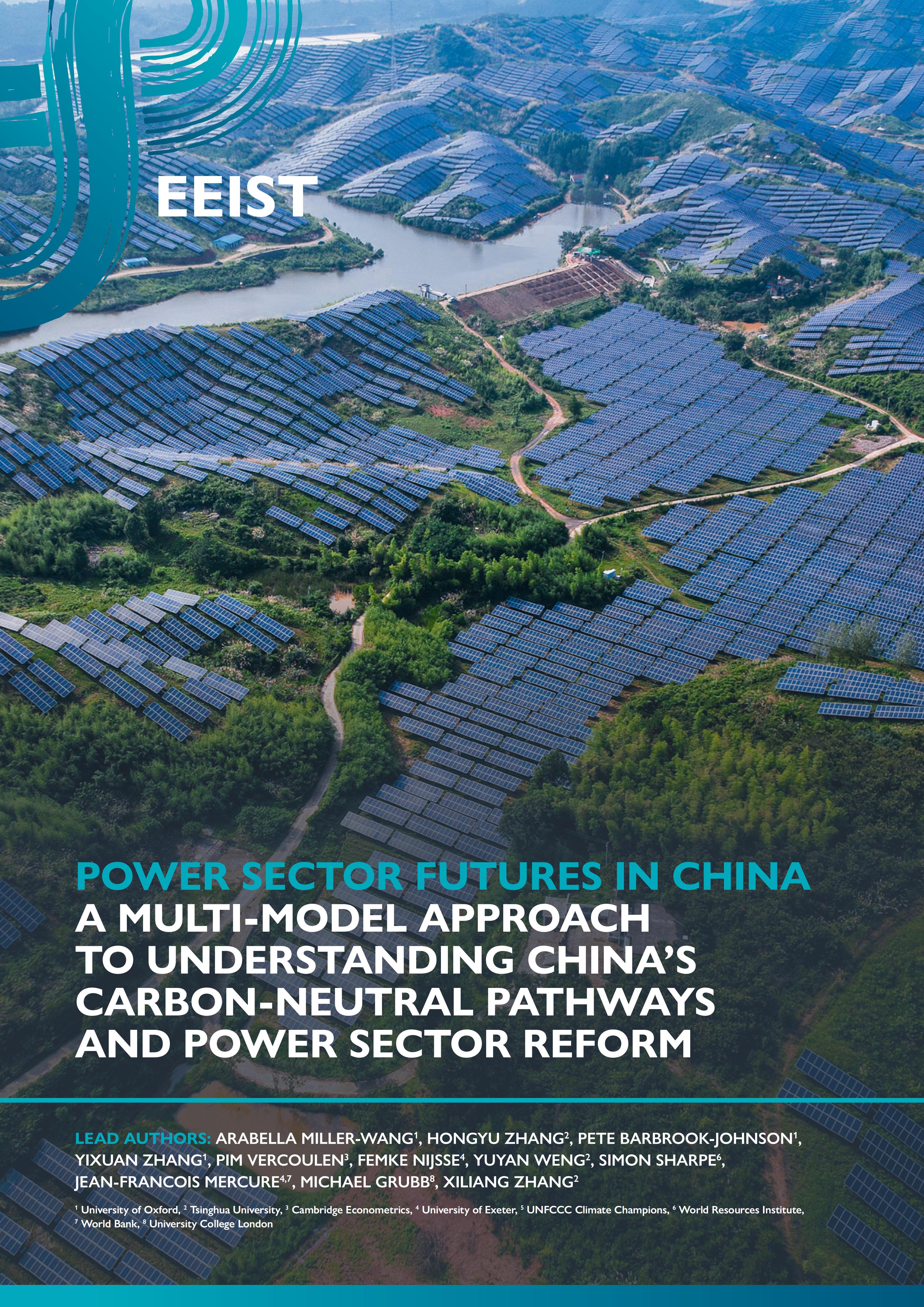The Institute of Energy, Environment and Economy at Tsinghua University, and the Institute for New Economic Thinking at University of Oxford have conducted a join research project on the "Economics of Energy Innovation and System Transition" (EEIST). An important component of the project has focused on the decarbonization of China’s power sector.
The study aimed at assessing the carbon neutrality pathway of China's power sector with a multi-model comparison approach. The report released today serves as an important deliverable of the study.
First of all, the report provides an overview of the institutional reforms and the policy changes in the context of achieving China’s carbon neutrality goal. It then presents the two different but complementary energy-economy models: the REPO model developed by the 3E Institute at Tsinghua University and the E3ME-FTT- Power model developed jointly by the University of Exeter and Cambridge Econometrics. The models are used to simulate possible futures of the Chinese power sector. The simulation results from both models show that solar energy and wind energy would play a dominant role in the decarbonization of China’s power sector. The costs and impacts of the transformation on the economy, however, are largely different based on the assessments of the two models. Whether the transition costs would go up or down largely depends on the pricing policy instruments adopted and the mix of the electricity generation sources. It is also found that under the high renewable scenarios the impacts on GDP and investments appear to be positive while the impacts on employment vary by sector.
Those findings have important policy implications for China. It is shown that the institutional reforms of the power sector with an emphasis on price deregulations could have a large contribution to achieving the carbon neutrality goal. The ETS with a sufficiently high carbon price could also help China achieve its carbon neutrality goal to a large extent. It is also suggested that the importance of the removal of the potential technological, financial and legal barriers to rapid deployment of renewable energy technologies could never be overestimated.
(Click to read)
